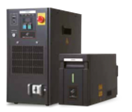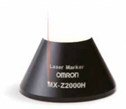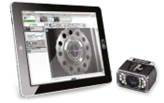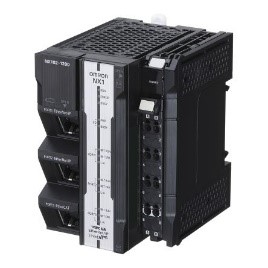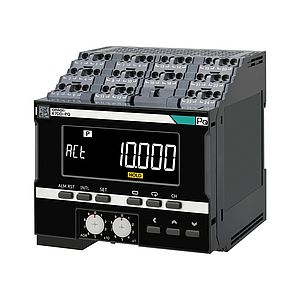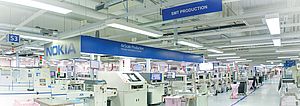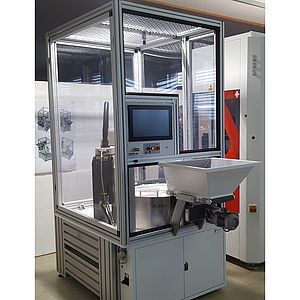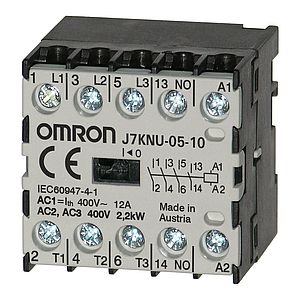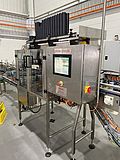From e-mobility to autonomous driving, from skills shortages to digitalisation: The automotive industry is undergoing a profound change, marked, for example, by a shift to globalized platforms and standardized vehicle architectures. On the one hand, production is becoming increasingly efficient, but on the other, even a single faulty part can have more far-reaching effects than ever before. Faced with costly recalls, automotive manufacturers are confronted with increasingly complex requirements and stricter specifications. Is the effort of traceability worth it if it means labeling up to 20,000 parts per vehicle? Yes, it is, but powerful reading and verification technologies along with powerful software is needed to make sense of all the data.
Omron Europe. There are several reasons why manufacturers need to keep accurate records of the parts and components that make up a new car. From a quality perspective, for example, barcode tracking helps to ensure that the right parts are put together. Even more important, however, is the ability to trace each car part back to its original supplier. In the event of a recall or the discovery of a faulty part, manufacturers have to be able to quickly and comprehensively find out where each part came from. This is complemented by information such as batch number, date of manufacture and other important information to identify which vehicles are affected by a defective part. Recommendations and standards from AIAG, VDA, ANSI and ISO specify the details. As the automotive industry globalises, worldwide production of light vehicles is expected to reach around 96 million units by 2023. This means that even a single faulty part can have an enormous impact, and therefore must be prevented at all costs.
So why is traceability important?
Documenting the origin and history of parts is vital to ensure fast and cost-efficient recalls. If the origin of a part isn’t completely documented, many more vehicles have to be recalled than necessary, increasing costs significantly. Additionally, traceability minimises counterfeiting because genuine parts can be traced back to their origin. Another advantage of direct part identification, labels or RFID tags is that they streamline the manufacturing process itself, because real-time traceability systems transmit process information along all tiers of the manufacturing process enabling supply chain optimisation and reduced lead times. They monitor and compare production lines, providing the data needed to find out which production steps are taking longer than expected and the reasons why.
Some large corporations already use global platforms for vehicle development based on a standardised architecture in a flexible manufacturing context so that millions of vehicles can use the same basic parts. By doing so, manufacturers spread the cost of manufacturing equipment and product development over a broader production base. The downside: a single faulty – or counterfeit – componen can have a huge impact. Reliable traceability systems are therefore more important than ever before. The large supplier system created by the globally standardised architecture requires real-time visibility so that problems can be fixed quickly before they affect millions of new cars entering the market.
Compact barcode readers needed
Barcodes help guarantee that every part carries a unique identifier with it wherever it goes. This is usually a direct part marking (DPM), etched or printed directly on the part itself. Amongst the key pieces of data encoded for traceability purposes in the automotive industry are information such as part, serial, lot or model number. Other information that could be encoded in barcodes are source manufacturer, place of origin, production time and date, expiration date, manufacturing or assembly facility, components used in assembly and / or software version.
Whenever a code is read on the factory floor, the traceability system transmits that data to a manufacturing execution system (MES) or enterprise resource planning (ERP) software, helping to correctly bundle parts and control other elements of the production line in a data-driven manner. Traceability is used to label powertrain components with specific dimensions to ensure a prefect fit. Automation of processes significantly reduces the likelihood of errors in this context. However, this is not always straightforward, as barcode or RFID readers need to be integrated into space-constrained assembly line machinery. It therefore makes sense to use particularly compact and space-saving barcode readers that are specifically designed for applications where readers have to be built into complex equipment. Furthermore, powerful readers should be able to read a wide range of codes without complex software installation and even if the code is distorted, fading or damaged.
To ensure that every part carries the required data, some barcodes need to be particularly small. As with damaged codes, tiny codes require high-performance barcode readers that can read data with the required speed and accuracy. As more and more markings are applied earlier in the manufacturing process, they are increasingly likely to be damaged in the harsh conditions of the factory. Exposure to heat, splashes or caustic industrial chemicals can damage barcodes – even if they have been applied using a permanent method such as laser marking. For this reason, it is important that barcodes have the highest level of readability from the start. To ensure that barcodes are of good quality and remain readable throughout the life of the part, manufacturers can set up a barcode verification system to evaluate them against international standards such as ISO/IEC 29158. Diagnostic tools in the verification software should also provide troubleshooting information to adjust the marking devices and improve barcode quality. These barcode verifiers can be used for DPMs as well as traditional labels.
Fibre laser marking and embedded SQL clients
One important technology for reliable traceability is fibre laser marking: machines that can apply exceptionally high-resolution and highly durable marks to a wide range of materials. In this context, OMRON's MX-Z series is particularly easy to integrate with other systems and controls, making marking more flexible. Another helpful technology approach is embedded SQL- or MQTT clients to transfer data directly to an SQL database or another system, so controllers can process traceability data without compromising machine control performance. Compared to the traditional method of using SCADA for data collection, logging via SQL has a much smaller impact on machine cycle time and can increase productivity by up to ten percent.
Conclusion: Traceability integral part of modern production
Traceability systems provide a way to put process changes in context and analyze the effects they have on the quality of the resulting product. They help identify risks, reduce their impact, and generally maintain a state of constant vigilance. The more automated a traceability system is with real-time decision tracking, the better it is at analyzing the production process and rooting out problem steps. Although traceability may seem complex, its underlying structure is relatively simple. By affixing unique barcodes to works-in-progress and scanning these codes throughout the assembly process, manufacturers can gather and store significant amounts of data on the whereabouts and history of each item at each point in time.
Automotive manufacturers are currently facing a variety of pressing and complex challenges that require comprehensive and reliable documentation and traceability. Processing all the data generated by barcode scanning on a manufacturing line can dramatically lengthen production cycles unless manufacturers implement specific technologies that mitigate this problem. To be future-proof and competitive, companies therefore need powerful automation and robotics solutions paired with smart and integrated traceability solutions such as laser markers, barcode readers, barcode verifiers and controllers that can capture and analyse data without interfering with production.
Nico Hooiveld, Business Development Manager at OMRON Europe



